Why joint US-South Korean research on plutonium separation raises nuclear proliferation danger
By Jungmin Kang, Frank von Hippel | January 13, 2022
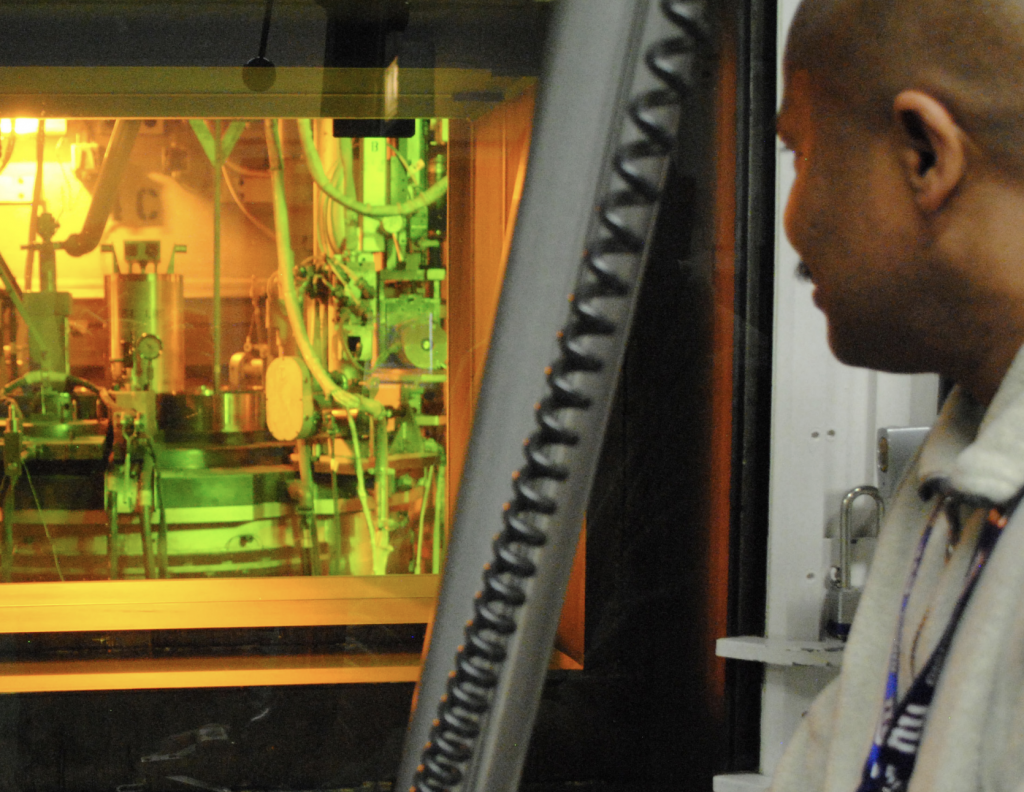 Idaho National Laboratory’s Fuel Conditioning Facility supports work to demonstrate the technical feasibility of a nuclear recycling technique called pyroprocessing. Photo Credit: Fuel Conditioning Fact Sheet, Idaho National Laboratory.
Idaho National Laboratory’s Fuel Conditioning Facility supports work to demonstrate the technical feasibility of a nuclear recycling technique called pyroprocessing. Photo Credit: Fuel Conditioning Fact Sheet, Idaho National Laboratory.
South Korea, like the United States, has long relied on nuclear power as a major source of electric power. As a result, it has amassed large stores of spent nuclear fuel and, as in the United States, has experienced political pushback from populations around proposed central sites for the spent fuel.
South Korea also has a history of interest in nuclear weapons to deter North Korean attack. The United States stationed nuclear weapons in South Korea during the Cold War but withdrew them in 1991. North Korea conducted its first nuclear test in 2006. US and South Korean policy is to seek the elimination of North Korea’s nuclear weapons and achieve a nuclear-weapon-free Korean peninsula. That goal currently appears distant, but South Korea acquiring nuclear weapons could make it even more distant.
South Korea’s interest in spent fuel disposal and in a nuclear-weapon option account for the Korea Atomic Energy Research Institute’s dogged interest in the separation of plutonium from its spent fuel. Two US Energy Department nuclear laboratories, Argonne National Laboratory (outside of Chicago) and the Idaho National Laboratory (which originated as Argonne’s reactor test site), have encouraged that interest because of their own interests in plutonium separation. Now, a secret, leaked, joint South Korean-US report shows deliberate blindness to the economic and proliferation concerns associated with plutonium separation and lays the basis for policies that would put South Korea on the threshold of being a nuclear-weapon state.
The report was produced by the Argonne and Idaho National Laboratories and the Korea Atomic Energy Research Institute at the end of 2021. It addresses their 10 years of collaborative research and development (R&D) on plutonium separation, using a “pyroprocessing” technology developed by Argonne.
South Korea’s government has accepted the report as a justification for continued joint R&D on pyroprocessing and sodium-cooled reactors, and the Biden administration is not seeking an independent review. The leaked pages raise serious concerns, however, about the completeness and quality of the analysis. With regard to costs, the enthusiasts who authored the report ignored the lessons of decades of failed efforts to commercialize these dangerous technologies. Their strategy appears to keep their collaboration alive until new administrations come into power in South Korea and the United States, which they hope will allow the Korea Atomic Energy Resrach Institute to actually build a prototype pyroprocessing plant and a plutonium-fueled reactor.
Plutonium’s nuclear-weapon background. Plutonium was originally separated during World War II to make nuclear weapons. The chain-reacting material in the Nagasaki bomb was plutonium and virtually all the world’s 10,000 nuclear weapons today contain miniaturized versions of the Nagasaki bomb.
After World War II, plutonium also was promoted as a nuclear fuel. Argonne National Lab was originally established to develop what were expected to be the reactors of the future—liquid-sodium-cooled plutonium “breeder” reactors that would be fueled by plutonium while transmuting uranium into more plutonium than they consumed.
The dream of a world fueled by plutonium became a nightmare in 1974, however, when India used some of the plutonium the US Atoms for Peace program had helped India separate to test its first nuclear-weapon design and the US discovered that four other countries, including South Korea, were going down the same track.[1]
Since 1974, the United States has mostly opposed the civilian separation of plutonium—especially in states that do not have nuclear weapons. Today, Japan is the only non-nuclear-armed state that separates plutonium. The Korea Atomic Energy Research Institute has domestic political support, however, for its demand that South Korea have the same right to separate plutonium as Japan. This due largely to Japan’s persistence in separating plutonium and memories of Japan’s exploitive and sometimes brutal occupation of the Korean peninsula from 1910 to 1945.
Civilian plutonium separation and proliferation. US reprocessing policy dates back to the 1960s and early 1970s, when the United States Atomic Energy Commission (AEC) promoted worldwide the importance of reprocessing power reactor spent fuel to recover the plutonium it contains. The AEC projected that uranium-efficient liquid-sodium-cooled, plutonium-fueled “breeder” reactors would soon take over from conventional water-cooled reactors. It worried that insufficient separated plutonium would be available to provide startup fuel for the breeders.
In 1974, however, India reminded the world that plutonium is a dual-use material. (See above.) In reaction to India’s nuclear test, US policy flipped under the Ford and Carter administrations to opposing plutonium separation for civilian purposes. In parallel, Congress, concerned that the Atomic Energy Commission was skewing national energy policy toward nuclear power and not taking nuclear power plant safety seriously enough, broke up the AEC into the Nuclear Regulatory Commission and what became the Energy Department.
Then, in 1977, the new Carter administration decided that the US domestic plutonium program was neither necessary nor economic. Breeder advocates fought back. In 1983, however, after the estimated cost of the Energy Department’s demonstration breeder reactor had increased fivefold, Congress ended the program. US nuclear utilities agreed—on the condition that the Energy Department would build a deep repository for their spent fuel.
The Energy Department nevertheless allowed the nuclear power divisions of Argonne and the Idaho National Laboratory (INL) to continue their research and development work in Idaho, using the Experimental Breeder Reactor II and an adjoining compact spent fuel “pyroprocessing” plant built to recycle its fuel.
Instead of dissolving the spent fuel in nitric acid as the nuclear weapon states have done to recover plutonium for their nuclear weapons programs, “pyroprocessing” dissolves spent fuel in molten salt and then a current is run through the salt to deposit the dissolved uranium and plutonium on electrodes.
In 1994, the Clinton administration finally shut down research and development on breeder reactors. It agreed, however, that the Idaho National Laboratory could use its pyroprocessing facility to process the accumulated Experimental Breeder II spent fuel into stable waste forms for disposal. (One of the authors—von Hippel—was the responsible official in the White House when these decisions where taken.)
When the Clinton administration was succeeded by the George W. Bush administration, however, Argonne resumed lobbying for pyroprocessing and, in 2001, persuaded an energy-policy task force led by then-Vice President Dick Cheney that pyroprocessing is “proliferation resistant” because the extracted plutonium is impure and unsuitable for nuclear weapons. On that basis, Argonne and INL were allowed to launch a collaboration on pyroprocessing research and development with Korea.
The Korea Atomic Energy Research Institute was enthusiastic. It had been blocked from pursuing reprocessing R&D since it had been discovered in 1974 that the institute was part of a nuclear-weapon program launched by South Korea’s then dictator, General Park Chung-hee.
At the end of the Bush administration, however, nonproliferation experts from six US national laboratories, including Argonne and INL, concluded that pyroprocessing is not significantly more proliferation resistant than conventional reprocessing because it would be relatively easy to remove the weakly radioactive impurities from the plutonium separated by pyroprocessing.
Tense US-South Korea negotiations over peaceful nuclear cooperation. The finding that pyroprocessing is not proliferation resistant precipitated a struggle between the Obama administration and South Korea’s government during their negotiations for a new US-Republic of Korea Agreement of Cooperation on the Peaceful Uses of Nuclear Energy. The new agreement was required to replace the existing agreement, which was due to expire in 2014. But the negotiations stalemated when South Korea, under President Park Guen-hye (General Park’s daughter!), demanded the same right to reprocess the Reagan administration had granted Japan in 1987.
Ultimately, the two countries agreed to kick the issue down the road to 2021 when a joint 10-year INL-Argonne-Korean Atomic Energy Research Institute study on the technical and economic “feasibility” and the nonproliferation “acceptability” of pyroprocessing was due to be completed.
On this basis, South Korea’s Atomic Energy Research Institute, Argonne, and INL were allowed to continue their joint pyroprocessing research and development.
President Park Guen-hye was impeached for corruption in 2017 and was succeeded by President Moon Jae-in, whose policy has been to phase out nuclear power in South Korea. The Korea Atomic Energy Research Institute argues, however, that, independent of the future of nuclear power in South Korea, pyroprocessing of the spent fuel from South Korea’s pressurized water reactors and the fissioning of the recovered plutonium in sodium-cooled reactors will be essential to spent fuel management in South Korea.
South Korean presidents are limited to a single five-year term and the next presidential election will occur in March 2022, leaving the future of South Korea’s nuclear-energy policy uncertain.
At the beginning of September 2021, INL and the Korea Atomic Energy Research Institute submitted a 10-year report on their joint fuel cycle study. Instead of making a policy recommendation on the future of pyroprocessing, however, the Korea-US Joint Nuclear Fuel Cycle Research Steering Committee decided to continue the joint research. A senior US official with knowledge of the situation, told us that “at least three or four more years will be necessary for the two governments to be in a position to draw any actual conclusions related to the technical and economic feasibility and nonproliferation acceptability of pyroprocessing on the Korean Peninsula.”
Considering South Korea’s imminent presidential election and the overburdened policy agenda in Washington, this is understandable. But there is no justification for keeping secret the joint report on the findings of the 10-year joint “feasibility” study.
Leaks from the secret “feasibility” report. On September 1, South Korea’s Yonhap news agency reported that the Korea-US Joint Nuclear Fuel Cycle Research Steering Committee had “officially approved” a joint report from the US and South Korean nuclear laboratories. This report contained the results of their assessment of tradeoffs involved in pyroprocessing the spent fuel of South Korea’s pressurized water reactors and the fissioning of the recovered plutonium and other transuranic (heavier than uranium) elements in sodium-cooled reactors. The news agency wrote:
“This report analyses the technical and economic feasibility of pyroprocessing and [sodium-cooled fast-neutron reactors], which have been studied for the past 10 years by the Idaho Research Center, Argonne Research Institute, and Korea Atomic Energy Research Institute.
“The US Department of State, Department of Energy, and the Nuclear Security Administration participated in the [Fuel Cycle Study] Steering Committee [translated from Korean].”
According to the Korea Economic Daily, “the two countries agreed not to reveal details of the report.” And, indeed, both the South Korean and US governments have refused to release the report for independent peer review.
Excerpts from the feasibility study have been leaked, however. They reveal that INL and the Korea Atomic Energy Research Institute have learned nothing from 50 years of failed efforts in the United States, Russia, France, the United Kingdom, Japan, and India to commercialize sodium-cooled reactors. They also have learned nothing from INL’s own 20 years of failure to complete the pyroprocessing of the irradiated fuel produced by its Experimental Breeder Reactor II.
With regard to the economics, the feasibility study concluded that pyroprocessing pressurized-water-reactor spent fuel to recover its contained plutonium and building enough sodium-cooled reactors to fission the plutonium would add only 6 percent to the cost of a nuclear kilowatt hour. The estimate of this relatively small cost increase was based, however, on a misuse of INL’s own Advanced Fuel Cycle Cost Basis report. When one looks at the huge quoted uncertainties of numbers given in that report, it becomes clear that the 6 percent number quoted in the feasibility study is meaningless.
It appears also that the nuclear laboratory analysts assumed that pressurized water reactors and sodium-cooled fast-neutron reactors would operate with the same “load factors”—the ratio of the annual electric power output to the output if the reactor had operated at full capacity all year. Globally, the load factors of pressurized water reactors have mostly been between 70 and 90 percent. But, of the nine sodium-cooled experimental and prototype reactors that have been connected to the grid, four have had load factors of three percent or less and the median reactor had a load factor of 18 percent. This poor reliability is largely due to sodium leaks, which are much more serious than water leaks since sodium burns on contact with air and generates explosive hydrogen gas on contact with water (see this video).
Load factors matter. If, for example, the sodium-cooled reactors proposed for fissioning the plutonium produced by South Korea’s water-cooled reactors operated at one quarter the average load factor of the water-cooled reactors, four times as many would be required as assumed in the joint-lab report.
Similarly, the cost of pyroprocessing is given in the joint report as between $1,050 and $1,471 per kilogram of spent fuel. This is tiny fraction of the cost of INL’s own pyroprocessing venture, however. During the most recent five years of its 20-year effort, INL has achieved a pyroprocessing rate of only about 0.1 ton of Experimental Breeder Reactor II fuel per year at a cost of over $80,000 per kilogram.
In 2000, INL contracted with the Energy Department to pyroprocess about 25 tons of used fuel from the Experimental Breeder Reactor II within 10 years. Of that fuel, about three tons were from the reactor core and 22 tons were from a uranium “blanket” surrounding the reactor. During that 10-year period, only 13 percent of the material was treated. As of the end of September 2021, after 20 years, INL’s pyroprocessing program manager reported that cumulatively only about one ton of the core fuel had been pyroprocessed, and INL was looking into alternative, simpler technologies for treating the blanket material.
With regard to nonproliferation, the joint study apparently focused exclusively on the ability of the International Atomic Energy Agency (IAEA) to safeguard the pyroprocessing process. Its report concluded, “Based on US and ROK safeguards performance models, and the performance of [destructive assay] measurements in the study, a 30 MT/yr [metric ton per year] facility may be able to meet IAEA detection goals for abrupt material loss of a significant quantity (emphasis added).”
A “significant quantity” is the IAEA’s term for the 8 kilograms of plutonium it assumes would be sufficient to build a Nagasaki-type bomb. It would take 14 plants with a 30 metric ton per year throughput to keep up with the spent fuel discharged by South Korea’s 21 operating pressurized water power reactors. By the IAEA’s metric, each of those plants would separate enough plutonium for 30 to 40 nuclear bombs.
The report was silent on the more difficult challenge of detecting the gradual withdrawal of a significant quantity of plutonium over perhaps a year.
The central proliferation issue remains, however: The large flow of separated plutonium produced by pyroprocessing would make South Korea a latent nuclear-weapon state—like Japan. That is a very relevant concern since, according to a recent poll, 71.3 percent of South Korea’s public thinks the country should have nuclear weapons.
Based on the excerpts, if the feasibility study were released, it would not survive peer review. It is therefore most unfortunate that South Korea’s government has accepted the report uncritically as an endorsement of pyroprocessing, and the Biden administration has not released it for independent peer review.
Exaggerated claims of spent-fuel-management benefits. Immediately after it received the INL-Argonne-Korea Atomic Energy Research Institute “feasibility” study, South Korea’s Science Ministry, which funds the institute, established a Feasibility Review Committee to consider the laboratories’ report. At the end of December 2021, that committee reportedly concluded
“the pyroprocessing and [sodium-cooled fast-neutron reactor] system has potential as a spent fuel management technology with…safety, and nuclear non-proliferation, and [the Feasiblity Review Committee] submitted a review report containing recommendations [for the Korea Atomic Energy Research Institute] to continue R&D.”
As this conclusion suggests, the rationale for South Korea’s interest in pyroprocessing and sodium-cooled fast reactors is the claim that pyroprocessing can facilitate spent fuel management. The Korea Atomic Energy Research Institute’s argument for this claim is summarized in one of the articles reporting the Feasibility Review Committee’s recommendation:
“[A sodium-cooled fast reactor] is a technology that reduces the volume and toxicity of spent nuclear fuel by separating transuranium elements from spent fuel and incinerating them. Through [pyroprocessing], the volume of spent nuclear fuel can theoretically be reduced to 1/20 and [the recovered plutonium can be] recycled as [sodium-cooled-fast-reactor fuel].”
Any type of reprocessing separates the residual uranium in the fuel that has not fissioned or been converted to plutonium. This would, as claimed, reduce the mass of the radioactive waste by about 95 percent. But that reduction would be approximately offset by the mass of glass that would be added to the fission products to immobilize them and by the creation of other radioactively contaminated waste streams by reprocessing and the fabrication of fuel containing plutonium.
The main argument made today by advocates of spent fuel reprocessing and of recovering and fissioning the long-lived “transuranic” (heavier than uranium) elements produced in the fuel is that doing so would dramatically shorten from millions to hundreds of years the hazard from deeply buried spent fuel. The claim is that plutonium and the other transuranics dominate the long-term radioactive toxicity from spent fuel.
It has been known for a quarter of century, however, that separating out and fissioning the transuranic elements would not result in a significant reduction of the hazard from deeply buried spent fuel.
Three decades ago, the US Energy Department asked the US National Academies to study exactly this question. The resulting massive report, Nuclear Wastes: Technologies for Separations and Transmutation, found that, because of their low solubility in deep oxygen-free ground water, plutonium, and other transuranic isotopes would not dominate the dose at the surface from a deep spent fuel repository. Instead, the dose would be dominated by soluble long-lived fission products: iodine 131 (16-million-year half-life), technicium 99 (200,000 years), and cesium 135 (2 million years) and by the activation product, carbon 14 (5,700 years). The committee therefore concluded, “Taken alone, none of these dose reductions [from the separation and fissioning of transuranic elements] seem large enough to warrant the expense and additional operational risk of transmutation.” The “operational risk” would include nuclear-weapon proliferation and the serious accident risks associated with reprocessing.
In 2011, SKB, the company responsible for disposing of Sweden’s spent fuel, published an analysis of the doses from a beyond-worst-case scenario in a spent-fuel repository in which the spent fuel casks and the layers of relatively impermiable bentonite clay around them fail immediately. SKB calculated the contributions by different radioisotopes in the fuel to the doses received by a subsistence farmer on the surface as shown in Figure 1.
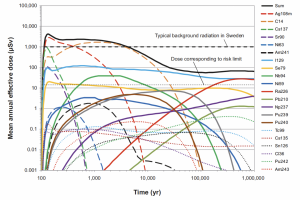
A similar result was obtained by a senior researcher at the Korea Atomic Energy Research Institute in 2009[2] but has been ignored by that organization.
The final argument that has been made by Argonne and the Korea Atomic Energy Research Institute for reprocessing and transmutation of plutonium and the other transuranic elements is that the reduced long-term heat output from the radioactive waste would make possible a more compact repository because the temperature of the clay and rock must be kept below damage thresholds. The benefit of a smaller repository would be bought, however, at the cost of sodium-cooled reactors and reprocessing facilities that would costs tens of billions.
In fact, the area of a South Korean future underground repository might not be that large. Currently, there is a moratorium on launching construction on new nuclear power plants in South Korea and the policy is not to extend the licenses of heavy-water-reactor power plants beyond 30 years and pressurized reactors beyond 40 years (60 years for the most recent design). On that basis, South Korea’s four heavy-water reactors will generate about 12,000 tons of spent fuel and its 26 pressurized water reactors (including four under construction) will generate about 26,000 tons.[3] These numbers are comparable to the 16,000 and 20,000 tons of spent fuel from heavy-water and pressurized water reactors respectively assumed in the Korea Atomic Energy Research Institute’s Korean Reference Spent Fuel Disposal System, whose tunnels would cover an underground area of about 5 square kilometers. This is smaller than the areas associated with some of South Korea’s nuclear power plants. Furthermore, the surface manifestations of underground repositories are small and tunnels at a depth of 500 meters do not compete for space with infrastructure on the surface (Figure 2).
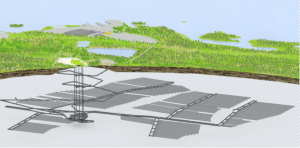
In any case, the problems with locating spent fuel repositories are not physical. They are political. Citizens may fear spent-fuel repositories, but they should fear more those who peddle the much more dangerous technologies of pyroprocessing and sodium-cooled reactors.
ENDNOTES:
[1] Frank von Hippel, Masafumi Takubo and Jungmin Kang, Plutonium: How Nuclear Power’s Dream Fuel Became a Nightmare (Springer, 2019) https://link.springer.com/book/10.1007/978-981-13-9901-5.
[2] Yongsoo Hwang and Ian Miller, “Integrated model of Korean spent fuel and high level waste disposal options,” in Proceedings of the 12th International Conference on Environmental Remediation and Radioactive Waste Management, Liverpool, UK, Oct. 11-15, 2009, paper no. ICEM2009-16091, 733-740.
[3] Other assumptions made were 90 percent capacity factors for the reactors and “burnups” of 7 and 50 Megawatt-days per kilogram of spent fuel for the heavy-water and pressurized-water reactors respectively.
Together, we make the world safer.
The Bulletin elevates expert voices above the noise. But as an independent nonprofit organization, our operations depend on the support of readers like you. Help us continue to deliver quality journalism that holds leaders accountable. Your support of our work at any level is important. In return, we promise our coverage will be understandable, influential, vigilant, solution-oriented, and fair-minded. Together we can make a difference.
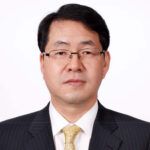
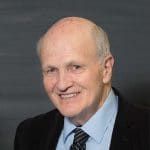














You mean iodine 129.
“Instead, the dose would be dominated by soluble long-lived fission products: iodine 131 (16-million-year half-life), technicium 99 (200,000 years), and cesium 135 (2 million years) and by the activation product, carbon 14 (5,700 years).”